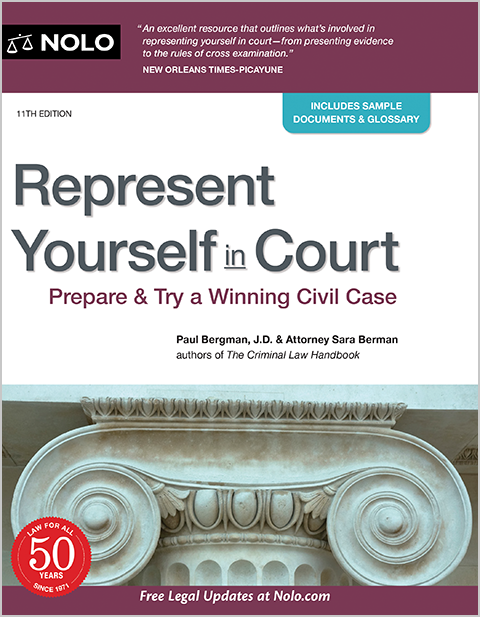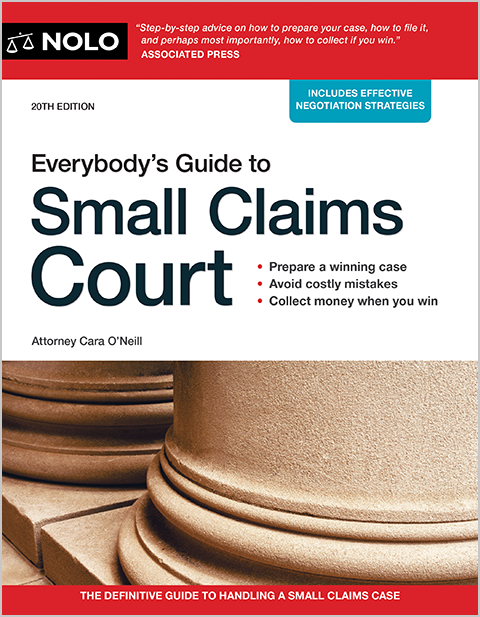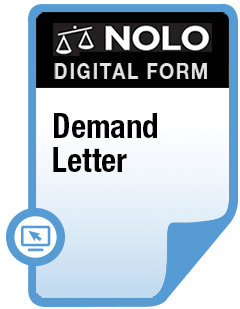You got a New Mexico money judgment. Now it's time to collect. We explain how to record New Mexico judgment liens, collect on a lien, and more.
You went to court and got a judgment that says you're entitled to money from the party you sued, now called a "judgment debtor." What comes next? How can you—the judgment creditor—collect the money you're due? That's the focus of this article.
One way to collect is by putting judgment liens on the judgment debtor's New Mexico property. After a quick review of how judgment liens differ from judgments, we'll turn our attention to the specifics of New Mexico law. In particular, we cover:
- the kinds of property subject to New Mexico judgment liens
- how you put judgment liens on New Mexico property
- how long your judgment lien lasts, and
- the ways you can turn your judgment lien into money.
If you want some background information, here's more about how court judgments are collected.
- What's the Difference Between a Judgment and a Judgment Lien?
- Kinds of Property Subject to New Mexico Judgment Liens
- Property Exempt From New Mexico Judgment Liens
- How to Attach New Mexico Judgment Liens
- How Long Does a New Mexico Judgment Last?
- How Do You Turn a New Mexico Judgment Lien Into Money?
- Next Steps
What's the Difference Between a Judgment and a Judgment Lien?
A judgment is a court order that says a judgment creditor is legally entitled to a sum of money from a judgment debtor. But a judgment, standing alone, isn't self-enforcing. That is, you can't take a judgment to your county sheriff's office and demand that the judgment debtor's real estate be sold to pay you.
If you want to seize and sell the judgment debtor's property, you first have to attach your judgment to specific items of property. That's what a judgment lien does. As we discuss later, when your judgment is docketed by the court clerk and filed with the county clerk, it becomes a lien against the judgment debtor's nonexempt real estate in that county. Once that's done, you can look for ways to turn your judgment into cold, hard cash.
Kinds of Property Subject to New Mexico Judgment Liens
In New Mexico, you can attach judgment liens only to real estate, meaning land, buildings, and other improvements. A properly docketed and filed judgment attaches a lien to real estate the judgment debtor:
- presently owns, and
- acquires later, as long as your judgment lien is still good.
No Liens on Personal Property
You can't put judgment liens on New Mexico personal property—cars, artwork, antiques, electronics, household furnishings, and the like. But that doesn't mean a judgment debtor always gets to keep their autos, boats, and other big ticket items. Even without judgment liens, there's a way to have the sheriff seize personal property.
If you're considering this step, speak to a New Mexico collection lawyer first. They can tell you whether it's worth your time and expense to go after the judgment debtor's personal property—and there's a good chance it won't be. If it's likely to be worthwhile, they'll guide you through the process.
Property Exempt From New Mexico Judgment Liens
Like all states, New Mexico exempts some property—both real and personal—from the reach of creditors. Dollar amounts mentioned here represent the maximum value of the debtor's exempt equity in the property, which might not be the same as the property's market value.
Here are a few examples:
- a homestead worth up to $150,000 ($300,000 in some cases)
- motor vehicles valued at up to $10,000
- as much as $75,000 worth of household goods and furnishings
- the judgment debtor's interest in a qualified retirement plan, including an individual retirement account, and
- a maximum of $15,000 in books, equipment, and tools used by the judgment debtor or their spouse in a trade, business, or occupation.
How to Attach New Mexico Judgment Liens
Once a New Mexico judgment is "docketed" (recorded) by the clerk of the court that entered it, follow these steps to attach a judgment lien in any New Mexico county where the judgment debtor owns real estate.
- Get a certified abstract or transcript. Get a certified abstract or transcript (summary) of your judgment—one for each county where you want a judgment lien—from the clerk of the court that issued the judgment. See if the clerk's website explains how to request certified copies. If not, call the clerk's office and ask for instructions. The clerk will know what you want. You'll have to pay a small fee for each certified copy.
- Record with the county clerk. Take a certified abstract or transcript to each county clerk where you want to attach a judgment lien, and ask them to file it. There will be a small filing fee. Once it's filed, you've got a judgment lien against the judgment debtor's real estate in that county.
A New Mexico judgment lien expires when the judgment on which it's based expires (see below).
How Long Does a New Mexico Judgment Last?
A New Mexico judgment expires 14 years from the date it was entered. Unlike most states, New Mexico doesn't allow a judgment to be extended, renewed, or revived beyond the term of the original judgment.
Once the 14-year term expires, your judgment is legally dead. You can't take any action to collect it. In other words, you've lost the right to recover the money you were owed by the judgment debtor.
How Do You Turn a New Mexico Judgment Lien Into Money?
In general, there are three ways you can try to collect on a New Mexico judgment lien:
- negotiate a settlement
- wait for the judgment debtor to sell or refinance the property, and
- foreclose on your lien.
Negotiate a Settlement
If you want payment sooner rather than later, this is likely your best choice. No, you won't get all the money you're entitled to, but that's the nature of a settlement. You'll collect faster—and more inexpensively—than via the other two options.
Wait for the Judgment Debtor to Sell or Refinance
Most often, a buyer or lender will insist on clear title, free of all judgment liens. To sell or refinance, the judgment debtor will have to approach you to make a deal. Only now, you've got more negotiating leverage. As long as you're willing to sit tight and wait, this too is a low-cost, low-stress way to collect.
Foreclose on Your Lien
Foreclosing on your lien means filing a lawsuit asking the court to order that the judgment debtor's real estate be sold at auction, just as would happen when foreclosing on a mortgage. This might seem like a tempting option. But before you head down this path, check with a local attorney to find out about the legwork and costs involved. In addition, see who's ahead of you in payment priority, or you might discover—too late—that the sale proceeds aren't enough to pay you in full (or at all).
Lastly, be aware that this step might be just the push the judgment debtor needs to declare bankruptcy. Should that happen, you're likely to be standing in a long, very unhappy line of creditors with little chance of getting paid.
Next Steps
We've covered New Mexico judgment lien basics, but of course, the devil's in the details. Now that you're familiar with New Mexico law, you might decide that your best option is to get help collecting your judgment. An experienced New Mexico creditor's rights or collection attorney can answer your questions and help you chart a collection path that gives you the best chance to maximize your recovery.
- What's the Difference Between a Judgment and a Judgment Lien?
- Kinds of Property Subject to New Mexico Judgment Liens
- Property Exempt From New Mexico Judgment Liens
- How to Attach New Mexico Judgment Liens
- How Long Does a New Mexico Judgment Last?
- How Do You Turn a New Mexico Judgment Lien Into Money?
- Next Steps



